Indian Society & Social Justice - 4 | Current Affairs & Hindu Analysis: Daily, Weekly & Monthly - UPSC PDF Download
| Table of contents |

|
| Supreme Court judgment on LGBTQ+ rights |

|
| Youth-LED Development |

|
| India Ageing Report 2023 |

|
| Pro-Life vs. Pro-Choice |

|
| Age of Consent |

|
Supreme Court judgment on LGBTQ+ rights

Context
- The Supreme Court's denial of legal recognition for same-sex marriages is perceived as a setback for the queer community in India.
- Despite advancements in law and a broader understanding of individual rights, the expectation for a gender-neutral interpretation of the Special Marriage Act (SMA) to include same-sex couples was not met by the five-judge Constitution Bench.
- Article 21 of the Constitution, encompassing rights like privacy, dignity, and marital choice, has seen an expanded scope over the years.
- However, the Supreme Court refrained from taking the extra step needed to permit marriages or civil unions that deviate from the heterosexual norm.
- All five judges opted to defer the decision to the legislature, suggesting that the enactment of a specific law addressing same-sex marriages or unions should be the prerogative of the legislative body.
What are the Observations made by the Supreme Court?
- Legislative Role: The Supreme Court emphasized its inability to modify the Special Marriage Act (SMA) to include same-sex couples, asserting that it's the prerogative of Parliament and state legislatures to enact laws on the matter. The absence of a central law allows state legislatures to formulate laws recognizing and regulating same-sex marriages, giving them the authority under Articles 245 and 246 of the Constitution.
- Policy Options: The court suggested various policy outcomes for the legislature, including making all marriage laws gender-neutral, creating a separate gender-neutral statute akin to SMA, establishing civil unions, or introducing domestic partnership legislation.
- State Initiatives: Tamil Nadu's amendment to the Hindu Marriage Act in 1968, allowing 'Suyamariyathai' marriages, was highlighted as an example of a state initiative.
- Civil Unions: The minority opinion advocated recognizing queer unions, even if not termed marriage, emphasizing that the right to form unions shouldn't be restricted based on sexual orientation. The majority opinion, however, stated that the government isn't obligated to recognize the rights stemming from such unions.
- Trans Persons' Rights: The majority opinion affirmed transgender individuals' right to marry within existing legal frameworks, distinguishing gender identity from sexual orientation. The decision recognized the validity of marriages between a Hindu male and a transwoman.
- Adoption Rights: While acknowledging the discriminatory nature of regulations restricting queer couples from adopting, the majority opinion did not strike them down, citing the need for a holistic exploration for the benefit of children.
- Entitlements: The court acknowledged the need for equal rights in areas like ration cards, joint bank accounts, pensions, and gratuity but left the resolution to either the judiciary or the legislative and executive branches.
- Protection from Violence: The judgment addressed violence against queer individuals from natal families and police, directing the police not to force queer individuals to return to their families.
- Recognition of Queer Love: The verdict rejected the government's argument that same-sex unions are unnatural, emphasizing the long-standing existence of queer love in India and asserting that societal acceptability doesn't undermine the constitutional legitimacy of same-sex relations.
What are the Issues related to the Judgement?
- Violation of Fundamental Rights: The verdict goes against the fundamental rights of LGBTQIA+ individuals as recognized by the Supreme Court in previous judgments. These rights include equality, dignity, and autonomy, which have been affirmed as fundamental in the past.
- The Supreme Court in various judgements such as Lata Singh vs State of UP (2006), Safin Jahan vs Ashokan (2018), Shakti Vahini vs Union of India (2018) and Laxmibai Chandarangi vs State of Karnataka (2021) has held that choosing a life partner is a Fundamental Right under Article 21.
- Ignoring Lived Realities: The verdict fails to take into account the real-life experiences of LGBTQIA+ individuals who often face discrimination, violence, and stigma in society due to their sexual orientation and gender identity.
- Undermining Constitutional Morality: The critics argue that the verdict undermines the principle of constitutional morality. They say that the state should respect the diversity and plurality of its citizens, rather than imposing the views of the majority on minority groups.
- Denial of Legal Benefits: The verdict denies LGBTQIA+ couples the social and legal benefits of marriage, such as inheritance, adoption, insurance, pension, etc. The lack of legal recognition for same-sex marriage results in these couples being deprived of the rights and privileges enjoyed by heterosexual couples.
- Contradiction with International Human Rights Standards: The verdict contradicts international human rights standards and norms. It claims that international standards uphold the right to marry and establish a family for all individuals, irrespective of their sexual orientation and gender identity. The verdict, in this view, is not in alignment with these global norms.
What are the Options left for the LGBT People Now?
- Legal Avenues: One possible path is to continue pursuing legal avenues. This may involve waiting for the committee's report and potentially filing new cases if the findings align with the petitioners' arguments.
- The Central government has said that it would constitute a committee, chaired by the Cabinet Secretary, to set out the benefits and entitlements for same-sex couples.
- Individual Rights: Another approach is for individuals in queer relationships to wage solitary battles for specific rights associated with marriage, such as joint bank accounts or pension rights, by challenging discrimination.
- Political Activism: The LGBTQ+ community needs to make queerness an integral part of political conversations and demands upon elected representatives, particularly in the lead-up to the 2024 Lok Sabha elections. This political activism may involve building solidarity among different LGBTQ+ groups to amplify their concerns.
- Exploring Alternatives: The LGBTQ+ community should explore alternative ways to expand their rights. The courts, while important, are not the only means of securing progress. This implies that community-building, education, and public awareness campaigns may play a crucial role in advancing LGBTQ+ rights in India.
Conclusion
- The Court denied the right to marry for same-sex couples, going against expectations of non-discrimination in marriage and passed on this responsibility to the legislature. While there are legal requirements for marriage, the personal choice to seek validation through it is protected by the Constitution, with some statutory limits. The majority opinion of the SC bench opposed the adoption for queer couples but supports trans persons in heterosexual marriages.
- All judges agree on the right of same-sex couples to cohabit without coercion. The Legislature may feel hesitant in legalizing same-sex marriages due to opposition based on religious and cultural reasons. The LGBTQIA+ community can find hope in the Court's call for a government committee on queer couples' rights, but the path to legal equality remains challenging.
Youth-LED Development
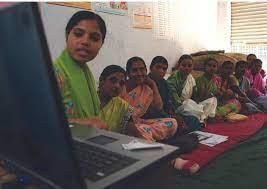
Context
Mera Yuva Bharat (MY Bharat) is an autonomous organization created by the Union Cabinet, aimed at promoting the development of youth and fostering initiatives led by the youth in the nation.
About Mera Yuva Bharat
- Mera Yuva Bharat (MY Bharat) aims to provide equitable access to opportunities and resources for young people between the ages of 15-29 (and, in some cases, 10-19) to help them actualize their aspirations and contribute to the development of the nation.
- It focuses on making the youth active drivers of development rather than passive recipients. It recognizes the potential of young people to lead and create positive change in their communities and the country as a whole.
- Technology is a central component of MY Bharat, allowing young people to access resources and connects with opportunities. It facilitates data collection, communication, and program management.
- The program is scheduled to be launched on National Unity Day, October 31, 2023. National Unity Day, also known as Rashtriya Ekta Diwas, is celebrated to commemorate the birth anniversary of Sardar Vallabhbhai Patel, who played a significant role in the unification of India.
Objectives
- Leadership Development in the Youth: MY Bharat aims to improve the leadership skills of young people through experiential learning and programmatic skills. This means offering practical, hands-on experiences to develop leadership abilities.
- Social Innovation: The program seeks to invest more in youth to turn them into social innovators and leaders in their communities, which can drive positive change and development.
- Alignment with Youth Aspirations: It aims to align the government's focus with the aspirations of the youth. By understanding and addressing what young people desire, it can lead to more effective development initiatives.
- Efficiency through Convergence: MY Bharat will bring together and converge existing youth-related programs and services, making it more efficient for young people to access the resources and opportunities they need.
- Centralized Youth Database: The program will create a centralized youth database, which can be valuable for research, policymaking, and targeted program delivery.
- Enhanced Communication: It promotes improved two-way communication between the government, youth, and other stakeholders who engage with young people. This ensures that youth are aware of government initiatives and can provide feedback.
- Phygital Ecosystem: The program emphasizes the creation of a "phygital" ecosystem, combining physical and digital elements to engage with young individuals. This approach allows for greater accessibility and inclusivity by utilizing both traditional and digital tools.
Significance
- India's youth is a critical demographic, and they are expected to play a pivotal role in the nation's future. MY Bharat aims to empower them to become active contributors to nation-building.
- The program recognizes the need for a framework that unites youth from various backgrounds, including rural, urban, and rurban areas, to work together towards common goals.
- In a rapidly changing world driven by technology, MY Bharat acknowledges the importance of using technology to engage with the youth effectively and efficiently.
- By creating a phygital ecosystem, MY Bharat intends to make government programs and initiatives accessible to young individuals, enhancing outreach and participation.
Conclusion
Mera Yuva Bharat (MY Bharat) is a visionary initiative designed to empower the youth of India. It seeks to equip them with the necessary resources, opportunities, and support to emerge as leaders, innovators, and contributors to the nation's development. Acknowledging the evolving dynamics of the youth demographic, the initiative emphasizes the role of technology and advocates for a cohesive approach to engage young individuals from diverse backgrounds.
India Ageing Report 2023
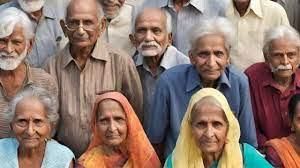
Context
The UNFPA (United Nations Population Fund) India, in partnership with the International Institute for Population Sciences (IIPS), has released the India Ageing Report 2023. This report sheds light on the substantial and swiftly increasing elderly population in India.
What are the Key Highlights of the Report?
- Demographic Trends:
- India's elderly population is growing rapidly, with a decadal growth rate of 41%.
- By 2050, over 20% of India's population will be elderly.
- The elderly population in India will surpass the population of children (0 to 15 years old) by 2046.
- The population of people aged 80+ years is expected to increase by around 279% between 2022 and 2050.
- Higher Life Expectancy of Women: Women have a higher life expectancy at ages 60 and 80 compared to men, with variations across states and territories.
- For instance, in Himachal Pradesh and Kerala, women at 60 years have a life expectancy of 23 and 22 years, respectively, which is four years greater than men at 60 years in these States — as compared to the national average differential of only 1.5 years.
- Poverty and Well-being:
- More than 40% of the elderly in India are in the poorest wealth quintile.
- Poverty among the elderly is a concern, affecting their quality of life and healthcare utilization.
- A substantial proportion of elderly individuals, especially women, are living without any income, affecting their quality of life and healthcare utilization.
- More than 40% of the elderly in India are in the poorest wealth quintile.
- Regional Variations:
- There are significant inter-State variations in the elderly population and their growth rates.
- Most States in the southern region and select northern States such as Himachal Pradesh and Punjab reported a higher share of the elderly population than the national average in 2021, a gap that is expected to widen by 2036.
- Sex Ratio of the Elderly Population:
- The sex ratio among the elderly has been climbing steadily since 1991, with the ratio in the general population stagnating.
- Between 2011 and 2021, the ratio increased in India as a whole and across all regions, barring the Union Territories and western India.
- In the northeast and the east, while the sex ratio of the elderly increased, it remained below 1,000 in both years, indicating that men still outnumber the women in these regions even at 60-plus years.
- However in central India, where the sex ratio went from 973 in 2011 to 1,053 in 2021, implying that the women caught up with and outperformed the men in survival after 60 years over the decade.
- The sex ratio among the elderly has been climbing steadily since 1991, with the ratio in the general population stagnating.
- Low Awareness of Social Security Schemes:
- The elderly in India have low awareness about the various social security schemes designed for them.
- A little more than half of the elderly (55%) are aware of the old-age pension scheme (IGNOAPS); 44% about the widow pension scheme (IGNWPS); and 12% about the Annapurna Scheme.
- Concern and Challenges:
- Poverty is inherently gendered in old age when older women are more likely to be widowed, living alone, with no income and with fewer assets of their own, and fully dependent on family for support.
- The major challenges facing India’s aging population are the feminisation and ruralisation of this older population.
What are the Recommendations of the Report?
- Data Collection:
- Include relevant questions related to the elderly in national data collection exercises such as the National Sample Survey, the National Family Health Survey, and the Census of India.
- Improve data accuracy and coverage to address the lack of credible information on various issues related to the elderly.
- Regulation of Old Age Homes:
- Bring all Old Age Homes under regulatory purview to ensure standardized care and living conditions for elderly residents.
- Increase awareness about existing schemes for older persons and improve accessibility to these schemes.
- Elderly Self-Help Groups:
- Encourage the creation and functioning of elderly self-help groups to provide social support and assistance to elderly individuals.
- Foster community engagement and participation among the elderly through such groups.
- Multigenerational Households:
- Emphasize the importance of elderly people living in multigenerational households.
- Encourage policies that support and facilitate multigenerational living arrangements, promoting family bonds and mutual care.
- In Situ Ageing:
- Promote in situ (at home) ageing as much as possible.
- Create short-term care facilities like creches or day-care facilities to support elderly individuals living with their families.
- Acknowledge that elderly individuals often receive better care when residing in their respective family environments.
- Awareness and Education:
- Increase awareness among the public about the challenges faced by the elderly.
- Educate the community about the benefits of multigenerational living and in situ ageing.
- Policy Recommendations:
- Develop and implement policies based on the insights provided by credible data on elderly demographics and needs.
- Address gaps in existing policies to better cater to the growing elderly population in India.
Pro-Life vs. Pro-Choice
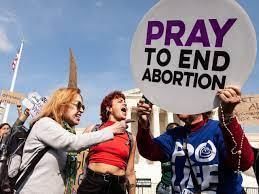
Context
Abortion laws in India have gained attention following the Supreme Court's decision to reject the plea of a married woman seeking permission to terminate her 26-week pregnancy. In the case of X vs Union of India, the woman, a mother of two, approached the Supreme Court citing post-partum depression after the birth of her second child. She argued that she was incapable, both physically and emotionally, to carry, deliver, or raise another child, and was facing challenges in terms of mental health, finances, and medical well-being.
What were the observations in the SC Judgment?
- The Chief Justice of India, D.Y. Chandrachud, leading a Bench, declared that the woman's situation did not align with the provisions of the Medical Termination of Pregnancy (MTP) Act, 1971. The Court clarified that the MTP Act allows termination of pregnancy beyond 24 weeks only in cases of substantial foetal abnormalities or direct threats to the woman's life. In this instance, as doctors would need to terminate a "viable foetus," the Court dismissed the plea, emphasizing that its exceptional powers would not be invoked.
- The Court's stance on a "viable foetus" indicates that once a foetus reaches viability, meaning it can survive outside the mother's uterus, the woman's right to choose is restricted, except in situations where the specific conditions outlined in the MTP Act are satisfied.
What is abortion and what is the debate around it?
- Abortion is a medical process employed to conclude a pregnancy, utilizing medication or a surgical method. However, the subject of abortion is surrounded by a debate between those advocating "Pro-Choice" and those favoring "Pro-Life" perspectives.
- In the "Pro-Choice" stance, there is support for women's abortion rights, considering the paramount importance of a woman's "bodily autonomy." On the other hand, the "Pro-Life" perspective opposes abortion rights for women, prioritizing the "right to life" of the foetus as of utmost significance.
What is the Current status of legislation on abortion in India and around the globe?
- India has embraced a Pro-Choice approach towards abortion, legalizing it through The Medical Termination of Pregnancy Act, 1971 (MTP Act 1971). The initial steps toward legalizing abortion were taken based on the recommendations of the Shantilal Committee. The MTP Act has undergone several amendments, with the latest being in 2021 (MTP Amendment Act 2021), aligning it with modern and progressive perspectives on women's reproductive rights and bodily autonomy.
- On the contrary, the United States has experienced a regression in the abortion rights domain. While the U.S. Supreme Court played a pivotal role in pioneering the abortion rights movement with the Roe vs Wade Judgement in 1973, granting women the constitutional right to have an abortion before the foetus is viable outside the womb or before the 24-28 week mark, recent developments have seen the overturning of this judgement. The U.S. Supreme Court has relinquished the constitutional protection for abortion rights, allowing individual states to formulate their own abortion laws.
- India has tried to address the lacunae in the MTP Act 1971 and brought amendments to the Act in 2021.
What are the differences between the MTP Act 1971 and the MTP Amendment Act 2021?
Listed below in the tabular format is the difference between the MTP Act 1971 and its amended Act of 2021.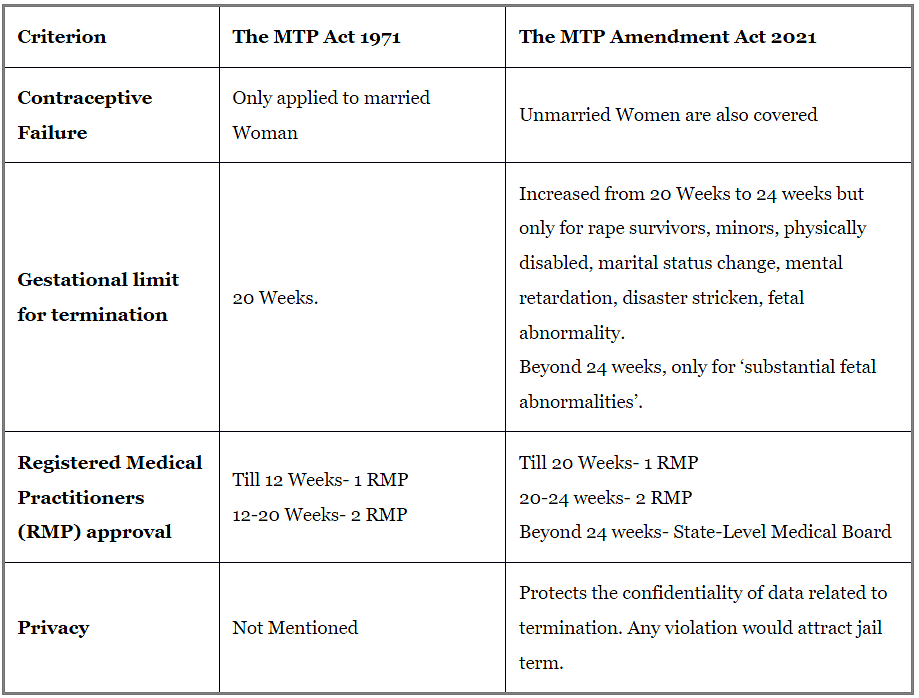
What is the significance of the amended MTP Act 2021?
- Enhanced Bodily Autonomy for Vulnerable Pregnant Women: The amended Act extends the upper gestation limit from 20 to 24 weeks for specific vulnerable pregnant women, including rape survivors. This grants them increased bodily autonomy, allowing them to make decisions regarding their pregnancies and mitigating the socio-economic and psychological impacts of unwanted pregnancies.
- Simplified Termination Process: The amended Act streamlines the termination process, requiring the opinion of only one registered Medical Practitioner for pregnancies up to 20 weeks. This simplification aims to make the termination process more accessible and efficient.
- Relaxation of Limit for Fetal Abnormalities: The Act removes the 24-week limit for termination in cases of substantial fetal abnormalities. A newly established State-level Medical Board can authorize such terminations even after 24 weeks. This change aims to reduce the burden on courts, eliminating the need for writ petitions seeking abortions beyond the previously permitted period.
- Privacy and Confidentiality Measures: To uphold the dignity and privacy of women, the Act ensures that the names of women undergoing terminated pregnancies remain confidential. This provision aims to safeguard their privacy and maintain confidentiality.
- Destigmatization of Unmarried Pregnancies: The Act permits the termination of pregnancy for unmarried women due to contraceptive failure. This provision works towards destigmatizing pregnancies outside of marriage.
- Reduction in Maternal Deaths and Morbidities: By simplifying the abortion process, the amended Act aims to reduce maternal deaths resulting from unsafe abortions. India currently records approximately 80,000 deaths due to illegal abortions, and these changes seek to address this significant public health concern.
What are the challenges associated with MTP Act 2021 to achieve safe abortion in India?
- Absence of "At-Will Abortion": The MTP Act does not allow for "at-will abortion," emphasizing its provider-centric nature where the decision of the Registered Medical Practitioner (RMP) is decisive and final. This lack of autonomy can limit a woman's right to choose.
- No Recourse for Vulnerable Pregnant Women After 24 Weeks: Rape victims and other vulnerable pregnant women, except in cases of substantial fetal abnormalities, cannot approach the Medical Board for termination beyond 24 weeks. This limitation leaves writ petitions as the only option for these women.
- Absence of Time Frame for Medical Board Decision: The Act does not stipulate a time frame within which the Medical Board must make decisions. Delays in the Medical Board's decisions can lead to further complications for women seeking termination.
- Limited Representation in Special Categories: The special categories of women benefiting from the increased gestation limit (20 to 24 weeks) are not fully representative. It excludes women facing financial crises or experiencing lactational amenorrhea or menopause.
- Fear of Persecution Among Registered Medical Practitioners: Registered medical practitioners may still fear criminal persecution, potentially driving women toward unsafe abortions or legal proceedings.
- Low Number of Registered Medical Practitioners: The Act mandates that only registered medical practitioners with experience in gynaecology or obstetrics can perform abortions. However, data indicates a low percentage (53%) of abortions performed by registered doctors, with a significant shortage (75%) in rural community health centres, leading to an increase in unsafe abortions.
What should be the way forward for abortion laws in India?
- Adoption of WHO Guidelines: India should align its abortion laws with World Health Organization (WHO) guidelines, fully decriminalizing abortion, removing grounds-based regulation, and eliminating gestational limits. This approach ensures non-discriminatory and equal access to abortion care for all women.
- Empowering Women's Reproductive Choices: The power dynamic in abortion decision-making should shift from the doctor to the woman seeking an abortion. Recognizing women's right to make reproductive choices, as established in the SC's decision in Justice K.S. Puttaswamy vs. Union of India (2017), necessitates the removal of conditionalities in the MTP Act.
- Expanding the Ambit of the MTP Act: The scope of the MTP Act should be broadened to include transgender individuals and other vulnerable women, such as those facing financial constraints or experiencing lactational amenorrhea or menopause.
- Creation of Certified Medical Practitioners Cadre: Establishing a cadre of certified medical practitioners within the healthcare system, including ASHA and ANM workers, can perform institutional abortions. This step aims to address the issue of unsafe abortions in India, ensuring access to safe abortion care.
- Ensuring Safe, Respectful, and Non-discriminatory Abortion Care: Women and girls should have access to abortion care that is safe, respectful, and non-discriminatory. This approach is essential for achieving Sustainable Development Goals (SDGs) related to good health and well-being (SDG3) and gender equality (SDG5).
Age of Consent
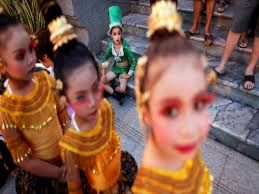
Context
Despite the Supreme Court (SC) and various High Courts expressing reservations about criminalizing adolescent sexual activity, the 22nd Law Commission of India, led by Justice Ritu Raj Awasthi, does not support reducing the age of consent for minors. The current age of consent for minors under the Protection of Children from Sexual Offences (POCSO) Act is 18, and the Commission is expected to present its report on this matter soon.
The Protection of Children from Sexual Offences (POCSO) Act
- About:
- It is the first comprehensive law in the country dealing specifically with sexual abuse of children, enacted in 2012 and is administered by the Ministry of Women and Child Development.
- It was intended to protect children from sexual assault, sexual harassment and pornographic violations, as well as to establish Special Courts for such trials.
- In 2019, the Act was amended to strengthen the penalties for specified offences in order to deter abusers and promote a dignified upbringing.
- Key provisions:
- Gender-neutral legislation: The Act defines a child as "any person" under the age of 18.
- Non-reporting is a crime: Any person in charge of an institution (excluding children) who fails to report the commission of a sexual offence involving a subordinate faces punishment.
- No time limit for reporting abuse: A victim may report an offence at any time, even years after the abuse has occurred.
- Keeping victim’s identity confidential: The Act forbids the disclosure of the victim's identity in any form of media unless authorised by the special courts established by the Act.
- Concerns:
- Such abuse is on the rise: Particularly since the Covid-19 outbreak, when new forms of cybercrime have emerged.
- Lack of awareness or knowledge: On the part of minor girls, boys, parents and society as a whole.
- Criminalisation of adolescent sex: The CJI D Y Chandrachud asked lawmakers to look into growing concern over criminalisation under the POCSO Act of adolescents who engage in consensual sexual activity.
What is the Issue of Minors being Booked for Minors Consensual Act?
- Minors aged between 16 and 18 who engage in a consensual act that may come under the definition of sexual activity under the law run the risk of being booked under POCSO.
- While these cases of adolescent sex may not necessarily result in conviction of a minor boy, the law is such that it could result in denial of bail and prolonged detention.
- According to a study, one in every four cases under the POCSO Act in West Bengal, Assam and Maharashtra constituted “romantic cases” where the victim was found to be in a consensual relationship with the accused.
The 22nd Law Commission of India’s Recommendations wrt POCSO
- The Law Commission is of the view that lowering the age of consent may be counterproductive for women.
- The Commission is likely to recommend awareness measures on adolescent health care including making sex education mandatory and teaching the basics of consent under the POCSO Act in schools.
Why is the Commission against lowering the Age of Consent?
- Influencing Factors:
- The decision of the Law Commission of India on the minimum age of consent is influenced by two main factors.
- These factors include the government's proposal to raise the minimum age of marriage for women.
- Another factor is the incongruity between Muslim personal law and the POCSO law.
- Uniform Age Standards:
- Currently, the age of consent under the POCSO Act, the age of majority, and the minimum age of marriage for women are all set at 18 years.
- The Union Cabinet has approved a proposal to increase the legal age of marriage for women from 18 to 21 years, aligning it with the age for men.
- Government's Rationale:
- The government's decision to raise the age of marriage is based on considerations of gender neutrality.
- Other reasons include addressing the risks associated with early pregnancies and promoting the overall empowerment of women.
- Muslim Personal Laws:
- Under Muslim personal laws, marriage for girls is permitted at puberty, which is generally presumed to be at age 15.
- The existing gap between Muslim personal laws and the special legislation like POCSO aims to prevent child marriages.
- Preventing Child Marriage:
- The incongruity in age standards between different laws is seen as a measure to discourage child marriages in the country.
- Potential Impact on Age of Consent:
- Lowering the age of consent for sexual activity under POCSO could potentially have implications for issues related to marriage age and practices governed by religious and personal laws.
- Alignment of Laws:
- The decision on the minimum age of consent under POCSO is likely to consider the overall alignment of legal standards related to age across different legislations.
- Holistic Approach:
- The Law Commission's decision appears to take into account a holistic approach, considering various legal aspects and proposals related to the age of consent and marriage for women.
- Impact on Empowerment:
- The decision may be seen as part of broader efforts to empower women by ensuring uniformity in age standards and addressing challenges associated with early marriages.
|
38 videos|5288 docs|1117 tests
|



















